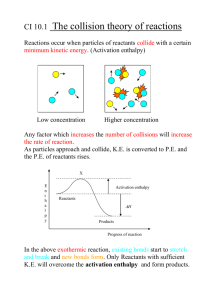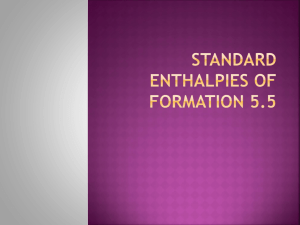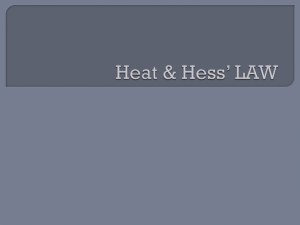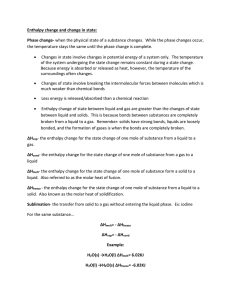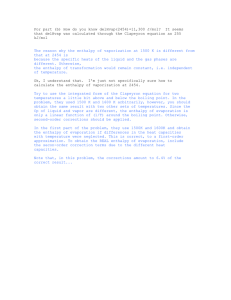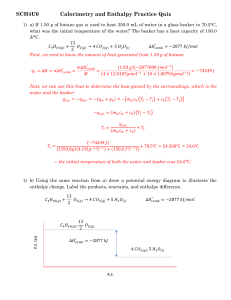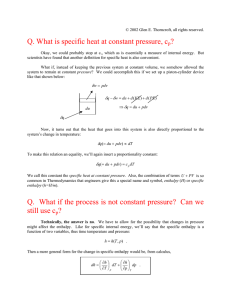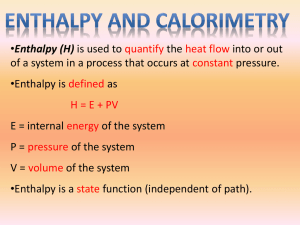l3bonddescribeenthalpyexamtips - chemicalminds
advertisement
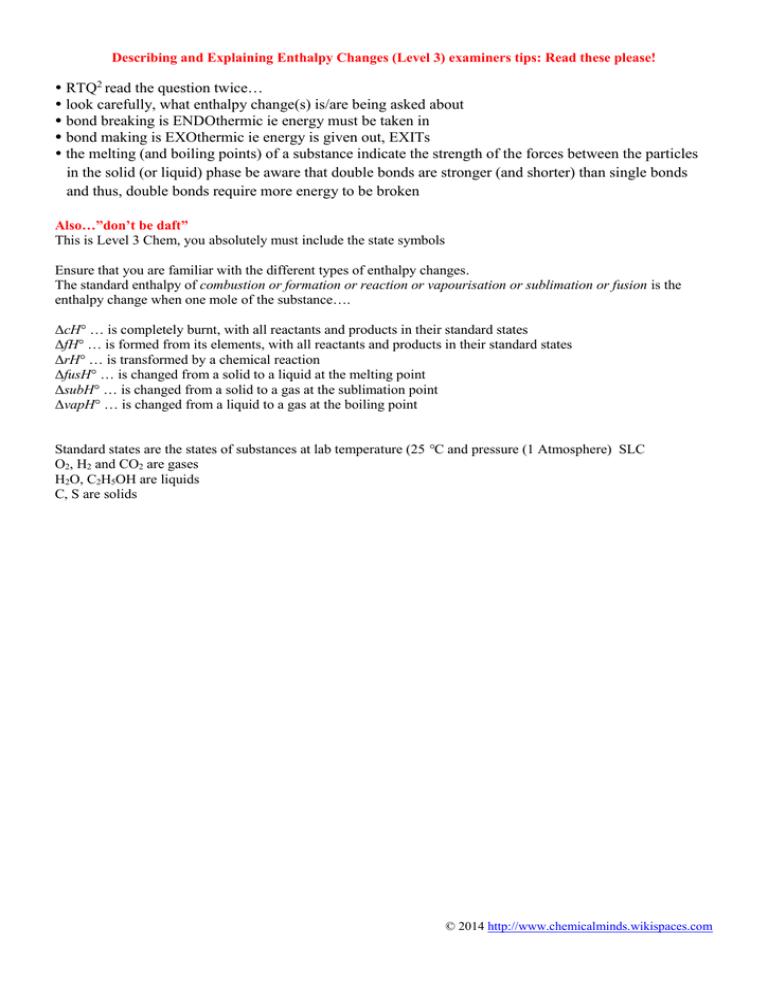
Describing and Explaining Enthalpy Changes (Level 3) examiners tips: Read these please! RTQ2 read the question twice… look carefully, what enthalpy change(s) is/are being asked about bond breaking is ENDOthermic ie energy must be taken in bond making is EXOthermic ie energy is given out, EXITs the melting (and boiling points) of a substance indicate the strength of the forces between the particles in the solid (or liquid) phase be aware that double bonds are stronger (and shorter) than single bonds and thus, double bonds require more energy to be broken Also…”don’t be daft” This is Level 3 Chem, you absolutely must include the state symbols Ensure that you are familiar with the different types of enthalpy changes. The standard enthalpy of combustion or formation or reaction or vapourisation or sublimation or fusion is the enthalpy change when one mole of the substance…. ΔcH° … is completely burnt, with all reactants and products in their standard states ΔfH° … is formed from its elements, with all reactants and products in their standard states ΔrH° … is transformed by a chemical reaction ΔfusH° … is changed from a solid to a liquid at the melting point ΔsubH° … is changed from a solid to a gas at the sublimation point ΔvapH° … is changed from a liquid to a gas at the boiling point Standard states are the states of substances at lab temperature (25 °C and pressure (1 Atmosphere) SLC O2, H2 and CO2 are gases H2O, C2H5OH are liquids C, S are solids © 2014 http://www.chemicalminds.wikispaces.com
